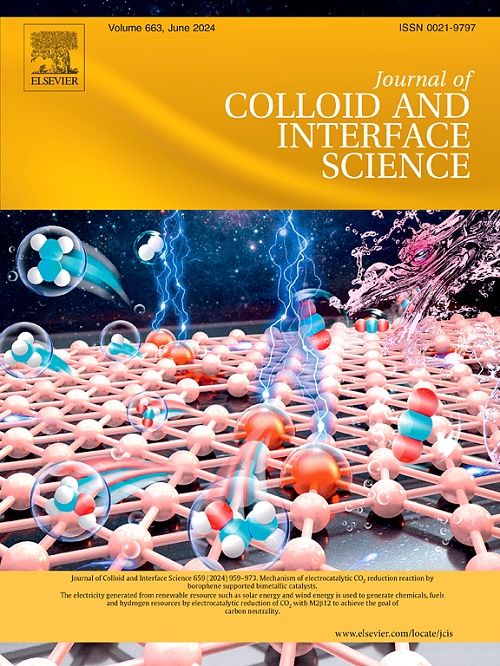Boosting ammonium-ion storage of V2O5·nH2O by encapsulating engineering of polyaniline
IF 9.4
1区 化学
Q1 CHEMISTRY, PHYSICAL
引用次数: 0
Abstract
The design and development of new host materials for ammonium-ion supercapacitors (NH4+-SCs) has been one of the topics of ongoing concern in recent years. Vanadium oxide has always been one of the most eye-catching electrode materials in the field of aqueous NH4+ energy storage. However, in the process of repeated charge/discharge, due to the direct contact with the aqueous electrolyte, vanadium oxide dissolution and structural collapse inevitably appear, and there is also the problem of low intrinsic conductivity, so it is urgent to address these issues. In this work, the conductive polymer polyaniline (PANI) is coated on the surface of V2O5·nH2O (VOH) by a simple hydrothermal method to form V2O5·nH2O@polyaniline (VOH@PANI) nanobelts with core–shell structure to improve the structural endurance and NH4+ storage capacity. The experimental and theoretical calculation results show that the introduction of PANI shells on VOH nanobelts can enhance the structural stability, ion/charge transfer and transport dynamics, thereby improving the NH4+ storage capacity and making it an ideal host material for NH4+-SCs. VOH@PANI core–shell composite has a specific capacitance of 453 F·g−1 at 0.5 A·g−1, far exceeding VOH (271 F·g−1) and PANI (295 F·g−1). The VOH@PANI//active carbon (AC) hybrid supercapacitor (HSC) composed of VOH@PANI cathode and AC anode has good electrochemical performance and practical application value. The technique offers suggestions for strengthening electrical conductivity and preventing structural collapse of other fragile materials.

求助全文
约1分钟内获得全文
求助全文
来源期刊
CiteScore
16.10
自引率
7.10%
发文量
2568
审稿时长
2 months
期刊介绍:
The Journal of Colloid and Interface Science publishes original research findings on the fundamental principles of colloid and interface science, as well as innovative applications in various fields. The criteria for publication include impact, quality, novelty, and originality.
Emphasis:
The journal emphasizes fundamental scientific innovation within the following categories:
A.Colloidal Materials and Nanomaterials
B.Soft Colloidal and Self-Assembly Systems
C.Adsorption, Catalysis, and Electrochemistry
D.Interfacial Processes, Capillarity, and Wetting
E.Biomaterials and Nanomedicine
F.Energy Conversion and Storage, and Environmental Technologies

 求助内容:
求助内容: 应助结果提醒方式:
应助结果提醒方式:


